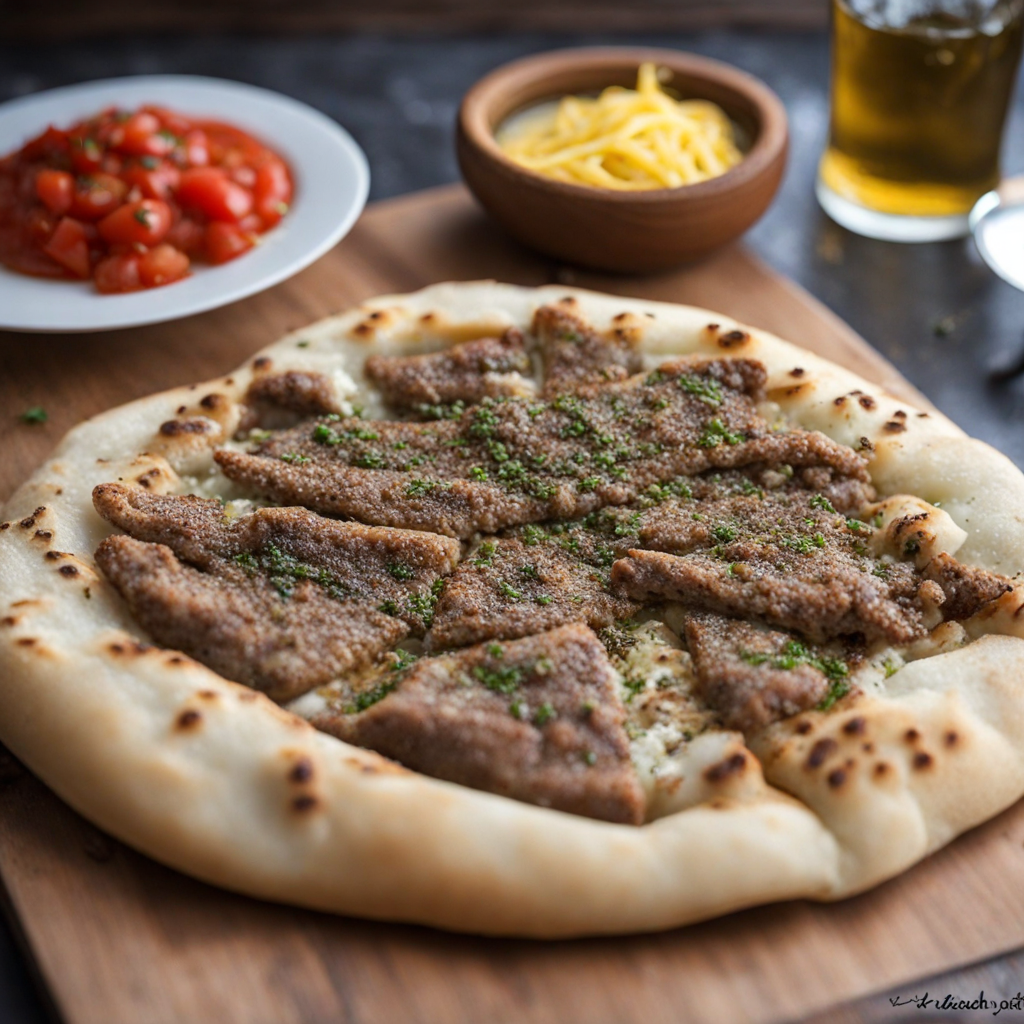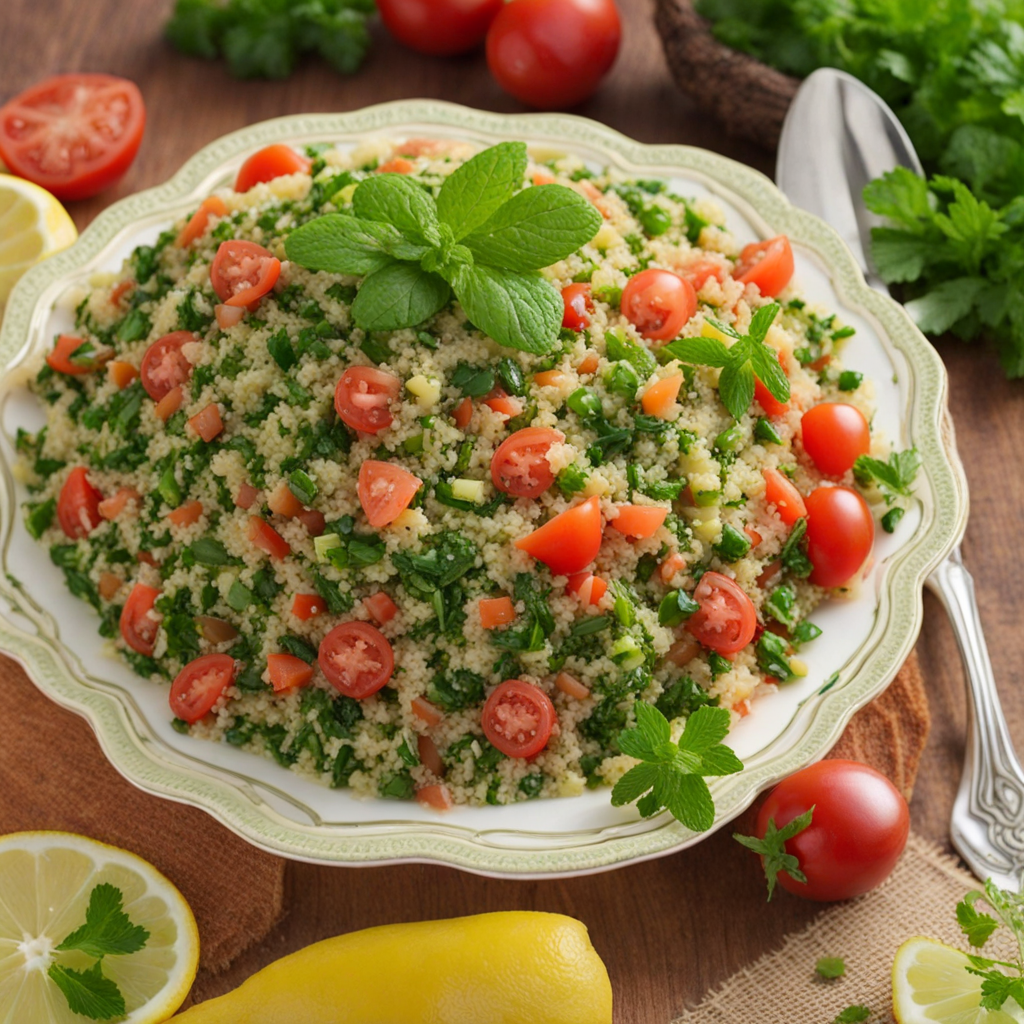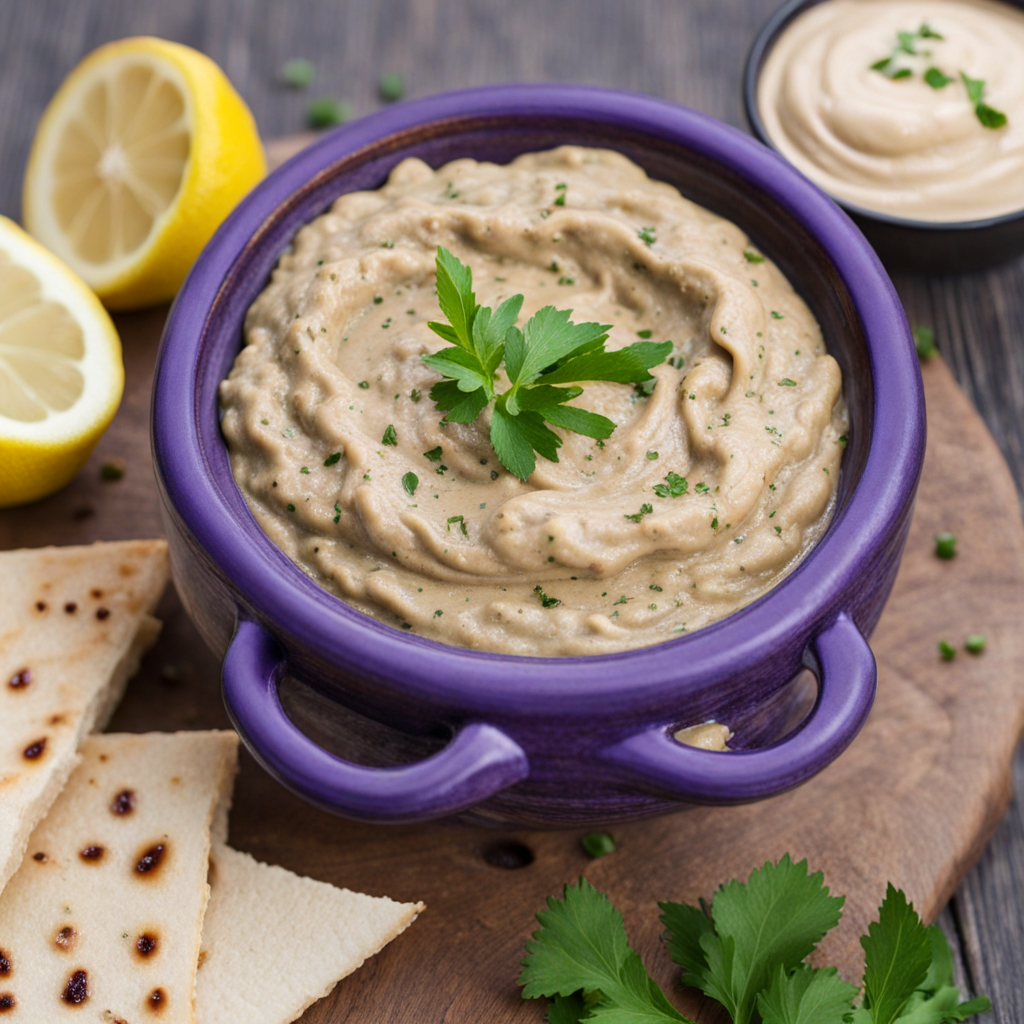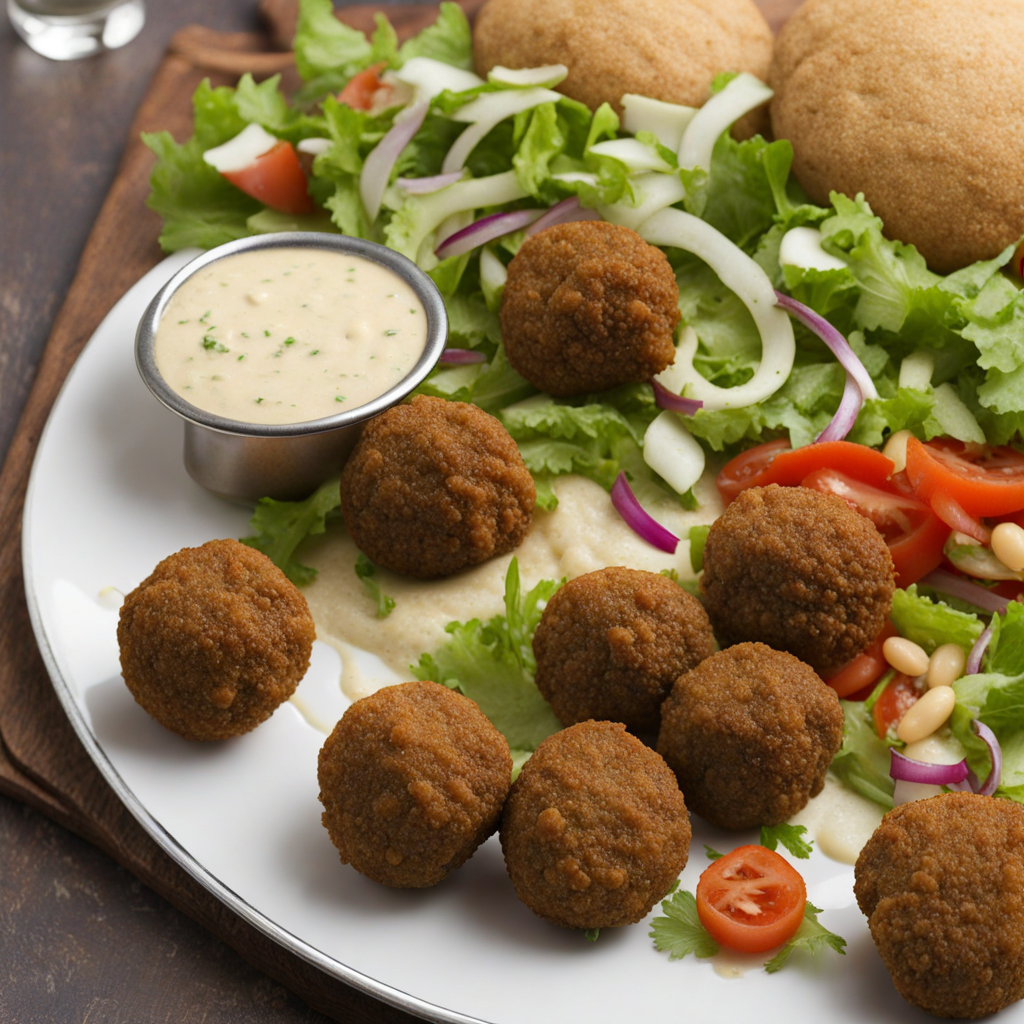Manakish
Manakish is a delightful traditional dish from Syria, known for its unique combination of flavors and textures. This versatile flatbread is typically made from a simple dough of flour, water, and yeast, which is rolled out into a round shape and baked to perfection. The base is slightly chewy with a golden-brown crust, providing an inviting canvas for a variety of toppings. The dough's subtle flavor complements the bold ingredients that adorn it, making each bite a delightful experience for the palate. One of the most popular toppings for manakish is za'atar, a fragrant blend of dried thyme, sesame seeds, sumac, and olive oil. When slathered onto the freshly baked dough, this mixture creates a savory and aromatic flavor profile that enchants the senses. Additionally, manakish can be topped with cheese, particularly Akkawi or halloumi, which melts beautifully and adds a creamy richness. Some variations incorporate ground meat, vegetables, or even a drizzle of tahini, showcasing the dish's adaptability to different tastes and preferences. Manakish is often enjoyed as a breakfast item or a snack, and it can be found in bakeries and street stalls across Syria. The experience of eating manakish is not just about the taste; it’s also about the communal aspect of sharing this beloved dish with family and friends. Whether enjoyed plain or with various toppings, manakish invites food lovers to explore its delicious layers and flavors, making it a must-try for anyone looking to discover the rich culinary heritage of Syrian cuisine.
How It Became This Dish
The History of مناقيش (Manakish): A Culinary Gem of Syria Origins and Early Beginnings Mnaqish, a beloved Levantine dish known primarily in Syria, is a type of flatbread generously topped with various ingredients, most commonly za'atar, cheese, or ground meat. The origins of manakish can be traced back to ancient times, when flatbreads were a staple in the diets of people across the Middle East. The art of bread-making in this region dates back thousands of years, with evidence of flatbreads being made by the Sumerians as early as 3000 BCE. The word "manakish" is derived from the Arabic root "نقش" (naqaš), which means "to carve" or "to engrave." This term reflects both the method of preparing the dough and the artistry involved in creating the toppings. Traditionally, manakish was made with simple ingredients such as flour, water, and salt, and it was often baked in communal ovens that served as the heart of village life. Cultural Significance Mnaqish holds a special place in Syrian culture and cuisine. It is more than just a dish; it is a symbol of hospitality, community, and tradition. In many Syrian households, making manakish is a communal activity, often enjoyed during leisurely weekend breakfasts or as a snack throughout the day. The preparation and sharing of manakish can bring families and friends together, highlighting the importance of food in social interactions. In the bustling markets of cities like Damascus, the aroma of freshly baked manakish wafts through the air, enticing passersby. Street vendors often sell manakish as a quick and delicious street food option, showcasing its versatility and accessibility. The act of buying manakish from a vendor has become a cherished ritual for many, representing a connection to their culinary heritage. Varieties and Toppings The toppings for manakish can vary widely, reflecting local tastes and seasonal ingredients. The most iconic version features za'atar, a mixture of dried thyme, sumac, sesame seeds, and olive oil. This fragrant blend not only adds flavor but is also believed to possess several health benefits, making it a popular choice for many. Cheese manakish, often topped with a mix of local cheeses such as Akkawi or Nabulsi, is another favorite. The combination of warm, gooey cheese with the crispy flatbread creates a delightful texture and flavor profile. For those seeking heartier options, manakish can also be topped with spiced ground meat, vegetables, or even eggs, catering to a variety of palates. The preparation of manakish is often a family affair, with each member contributing to the process, from dough-making to topping application. This not only fosters a sense of togetherness but also ensures that each family has its unique take on the dish, passed down through generations. Development Over Time As Syria has evolved through history, so too has the tradition of making manakish. During the Ottoman Empire, which ruled much of the Middle East for centuries, culinary practices were influenced by the diverse cultures within the empire. This period saw the introduction of various spices, cooking techniques, and ingredients, enriching the flavors of manakish. In modern times, globalization and migration have further transformed the dish. With Syrian diaspora communities spreading across the globe, manakish has gained recognition beyond its borders. Syrian expatriates have opened bakeries and restaurants in places like Europe, North America, and Australia, introducing the dish to a wider audience. Manakish has become a culinary ambassador for Syrian culture, showcasing the richness of its flavors and the warmth of its traditions. The advent of technology and social media has also played a significant role in the revival and popularization of manakish. Food bloggers and influencers often share recipes and creative variations of manakish, making it accessible to a new generation of cooks. This has led to innovative toppings and combinations that reflect contemporary tastes, while still honoring the traditional roots of the dish. Contemporary Significance Today, manakish remains a staple in Syrian cuisine, embodying the resilience and adaptability of its people. Despite the challenges faced over the past decade due to conflict and displacement, the tradition of making and sharing manakish has persisted. In refugee camps and diaspora communities, the act of preparing manakish serves as a reminder of home and heritage, providing comfort and a sense of normalcy in uncertain times. Furthermore, the global culinary scene has embraced manakish, leading to fusion variations that incorporate diverse ingredients and cooking styles. Chefs and home cooks alike experiment with toppings such as pesto, smoked salmon, or even vegan cheese, demonstrating the dish's versatility and appeal. In Syria, manakish continues to be a beloved breakfast choice, often complemented by a side of olives, tomatoes, and fresh mint tea. The dish has also found its way into modern cafés and restaurants, where chefs pay homage to traditional recipes while introducing contemporary twists. Conclusion The journey of manakish from its humble origins as a flatbread to a cherished culinary symbol of Syria encapsulates the rich tapestry of the region's history, culture, and resilience. As it continues to evolve, manakish remains a testament to the enduring power of food to connect people, preserve traditions, and celebrate heritage. Whether enjoyed in a bustling market, a family kitchen, or a trendy café, manakish is more than just a dish; it is a story that speaks to the heart of Syrian identity and the enduring spirit of its people.
You may like
Discover local flavors from Syria







